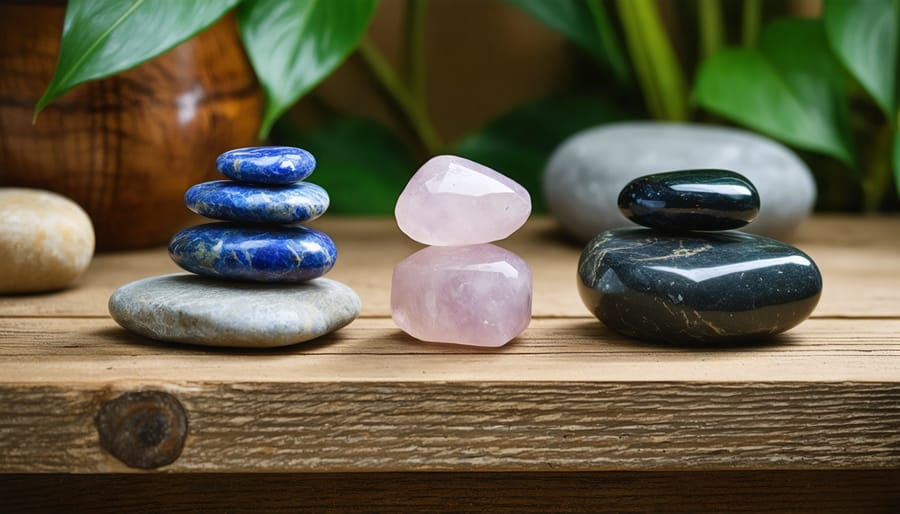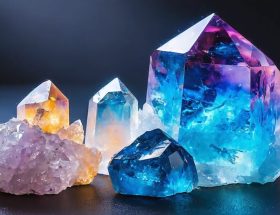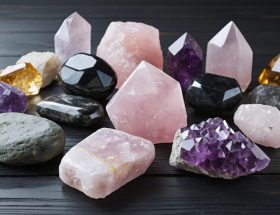Transform your living space into a sanctuary of tranquility with nature’s most powerful stress-relieving stones. As scientific evidence shows, certain stones possess inherent properties that can significantly reduce anxiety and promote emotional well-being. From the ancient meditation chambers of Eastern temples to modern wellness spaces, these remarkable formations have served as silent guardians of peace for millennia. Whether you’re designing a meditation corner, creating a spa-like bathroom retreat, or simply seeking to infuse your home with calming elements, understanding the distinct characteristics of stress-reducing stones can transform your environment. In this guide, we’ll explore three exceptional varieties of stress rocks, each offering unique properties that architects, designers, and homeowners can harness to create spaces that not only look beautiful but actively contribute to emotional wellness and stability.
Calming Blue Sodalite: Nature’s Tranquility Stone
Physical Properties and Appearance
The three types of stress rocks – metamorphic, igneous, and sedimentary – each display distinctive physical characteristics that reflect their formation processes. Metamorphic rocks often exhibit a banded or foliated appearance, with visible layers of minerals compressed under intense pressure. These rocks typically have a crystalline texture and may show dramatic patterns of swirls and streaks. Igneous rocks, formed from cooled magma, generally showcase a more uniform appearance with interlocking crystals, ranging from fine to coarse-grained textures. They can vary from glossy black to speckled gray or pink. Sedimentary rocks present a layered structure with visible bedding planes, often containing fossils and organic matter. Their colors span from earthy browns and tans to rich reds and whites, depending on their mineral composition and formation conditions.
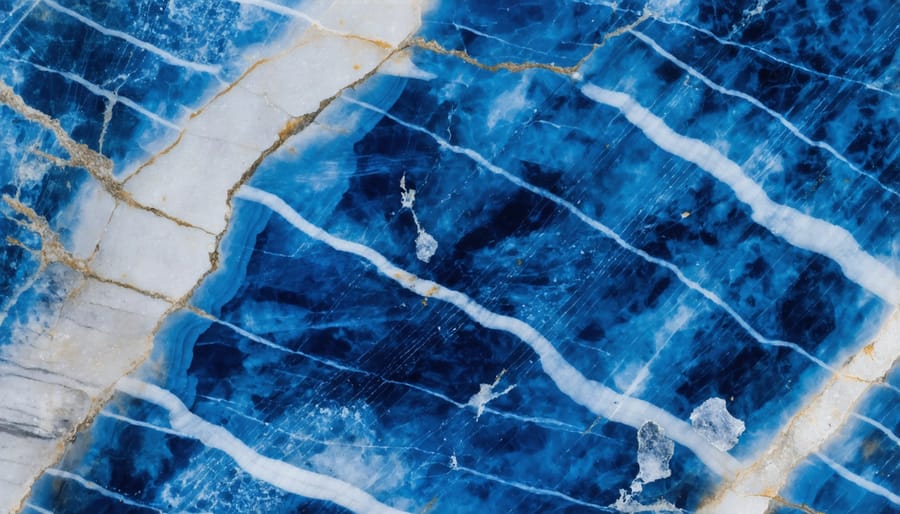
Design Applications and Placement
When incorporating stress-relieving stones into your space, strategic placement maximizes their calming benefits while enhancing your interior design. For meditation spaces, create a focal point by arranging these stones on a natural wooden shelf or dedicated altar. Place larger specimens on coffee tables or mantels as conversation pieces that double as stress-relief tools.
In home offices, position smaller stones near your workspace to promote focus and reduce work-related tension. Consider creating a desktop arrangement with all three types for comprehensive stress management throughout your workday. Bathroom counters and windowsills offer perfect spots for these stones, where natural light can highlight their unique patterns while creating a spa-like atmosphere.
For optimal results, integrate these stones into areas where you typically experience stress. Place them in your bedroom for better sleep quality, in your living room to promote relaxation during family time, or in your entryway to help transition from the outside world to your peaceful home environment.
Create mindful corners by combining stress stones with other natural elements like plants and wooden accessories. Use decorative bowls or geometric displays to showcase smaller specimens, and consider incorporating them into bookshelf styling for both functionality and aesthetic appeal. Remember to position them within easy reach during stressful moments, making them both beautiful decor elements and practical stress-management tools.
Rose Quartz: The Heart of Serenity
Characteristics and Benefits
Rose quartz stands out among stress-relieving stones with its distinctive soft pink coloration, ranging from pale blush to deep rose. This gentle hue reflects its nurturing properties, making it a popular choice for both decorative and therapeutic applications. The stone’s translucent quality allows light to penetrate its surface, creating a soothing ambiance in any space.
Known as the “stone of universal love,” rose quartz emits a gentle, calming energy that helps reduce stress and anxiety. Its presence can transform high-tension areas into peaceful sanctuaries. When incorporated into living spaces or wellness rooms, rose quartz helps create an atmosphere of tranquility and emotional balance.
The stone’s natural beauty and stress-relieving properties make it equally suitable for both large architectural features and smaller decorative elements. Whether displayed as a statement piece or integrated into everyday objects, rose quartz brings both aesthetic appeal and therapeutic benefits to interior environments.
Integration in Living Spaces
Rose quartz, with its gentle pink hue and calming properties, can effectively create a peaceful sanctuary within your living spaces. In bedrooms, place a large rose quartz specimen on your nightstand or incorporate smaller pieces into decorative bowls on dressers. The stone’s soothing energy is particularly beneficial in spaces dedicated to rest and relaxation.
Consider creating a meditation corner by arranging rose quartz clusters around your yoga mat or meditation cushion. The stone’s natural ability to promote emotional healing makes it ideal for areas where you practice mindfulness or unwind after a long day.
For maximum benefit, position rose quartz pieces where they can catch natural light, as this enhances their visual appeal and energetic properties. In relaxation areas, combine rose quartz with soft textiles and neutral colors to amplify its calming effects. You might also consider incorporating rose quartz into bathroom designs, where its presence can transform ordinary self-care routines into therapeutic experiences.
When selecting placement, trust your intuition while maintaining aesthetic balance. Whether used as standalone pieces or integrated into larger design elements, rose quartz adapts beautifully to both modern and traditional interiors while maintaining its stress-reducing properties.
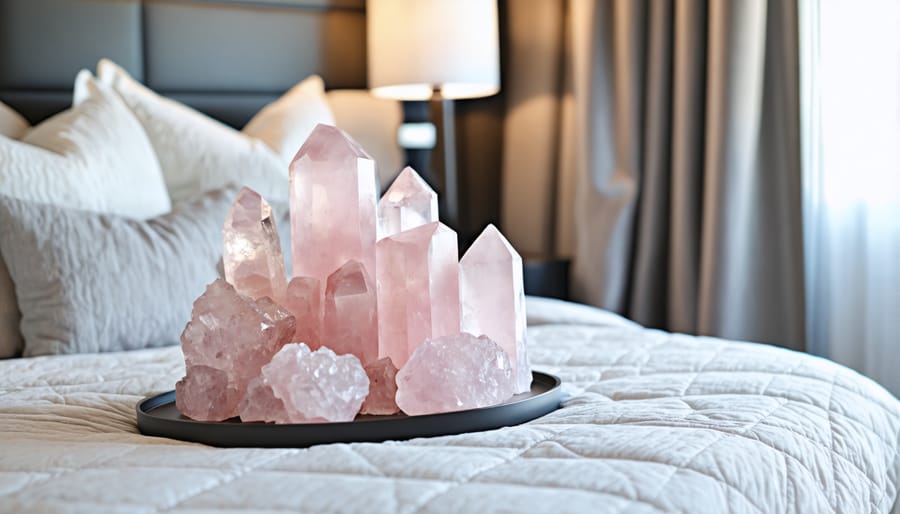
Black Tourmaline: Grounding Stone for Modern Life
Natural Properties
Natural stress rocks possess remarkable anxiety-reducing properties that make them valuable additions to both residential and commercial spaces. These stones work by releasing negative ions into the environment, which can help neutralize electromagnetic stress and promote a sense of calm. When properly placed in living or working areas, they can create a more balanced atmosphere and support emotional well-being. The stones’ crystalline structures interact with the body’s natural energy field, potentially helping to reduce stress levels and promote relaxation. Their natural beauty also contributes to creating visually peaceful environments, making them ideal for meditation spaces, wellness centers, and areas designated for relaxation.
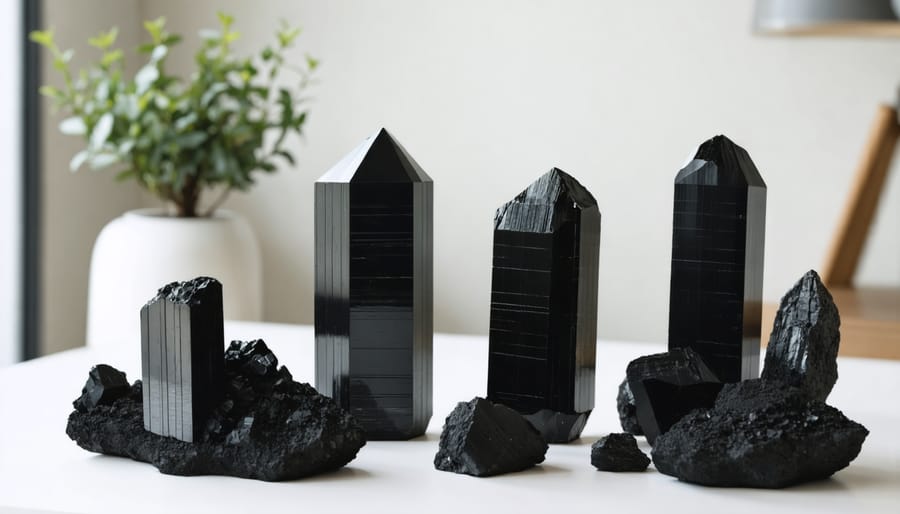
Contemporary Design Applications
Black tourmaline’s striking appearance and stress-relieving properties make it an increasingly popular choice in modern interior design. Architects and designers frequently incorporate this powerful stone into both residential and commercial spaces through thoughtfully placed decorative elements and functional features.
In home environments, black tourmaline clusters serve as sophisticated focal points when displayed on mantels or coffee tables. Contemporary designers often embed small tourmaline pieces into custom meditation corners or wellness rooms, creating dedicated spaces for stress relief. The stone’s dark, crystalline structure also works beautifully in minimalist bathrooms, where it can be arranged alongside white porcelain fixtures for dramatic contrast.
Office spaces benefit from black tourmaline’s grounding presence through strategic placement near workstations and meeting areas. Modern office designs frequently feature tourmaline-infused water features or stone arrangements in reception areas, combining aesthetic appeal with the stone’s natural stress-reducing properties. Some innovative designers incorporate crushed tourmaline into wall textures or flooring patterns, seamlessly blending natural elements with contemporary architecture.
For optimal impact, designers recommend positioning black tourmaline in high-traffic areas or spaces where stress typically accumulates. Popular applications include embedding the stone in custom furniture pieces, creating decorative wall installations, or incorporating it into lighting fixtures for a unique interplay of light and crystal structure.
Care and Maintenance
To maintain the beauty and effectiveness of your stress rocks, proper care is essential. Clean your stones regularly using a soft, dry cloth to remove dust and oils from handling. For deeper cleaning, use lukewarm water and mild soap, avoiding harsh chemicals that could damage the stone’s surface. Pat them completely dry with a soft cloth to prevent water spots.
Recharge your stress rocks periodically by placing them in natural sunlight for 2-4 hours or under moonlight overnight. This practice helps restore their energetic properties and maintains their effectiveness. For selenite and other water-sensitive stones, avoid direct water contact and use only a slightly damp cloth for cleaning.
Store your stress rocks in a soft pouch or dedicated box when not in use to prevent scratches and damage. Keep them separate from harder stones that could cause abrasions. Consider placing them on a soft cushion or cloth when displayed on hard surfaces.
Periodically check for any cracks or damage. While natural stones are generally durable, excessive dropping or temperature fluctuations can affect their integrity. If you notice any changes in color or texture, adjust their exposure to direct sunlight or humid conditions accordingly.
Regular maintenance ensures your stress rocks remain both beautiful and functional, providing continued support for your stress-relief practices.
Incorporating stress rocks into your living or working environment offers a harmonious blend of natural beauty and wellness benefits. These remarkable stones not only serve as striking decorative elements but also create spaces that promote relaxation and emotional balance. Whether used as standalone pieces, integrated into architectural features, or arranged in meditation corners, they provide both aesthetic and therapeutic value.
The versatility of these stones makes them ideal for various applications, from residential spaces to commercial environments. Their natural variations in color, texture, and pattern ensure that each installation is unique, adding character and authenticity to any space. Moreover, their durability means they’ll continue to provide their calming benefits for years to come.
By strategically placing these stones throughout your environment, you can create designated areas for stress relief and meditation. Their presence serves as a visual reminder to pause and reconnect with nature, even in the midst of busy urban settings. The combination of their physical presence and metaphysical properties makes them powerful tools for creating spaces that support mental well-being and emotional balance.
Whether you’re a homeowner seeking to create a more peaceful living space or a designer looking to incorporate wellness elements into your projects, these stress rocks offer an elegant solution that bridges the gap between functional design and holistic well-being.

